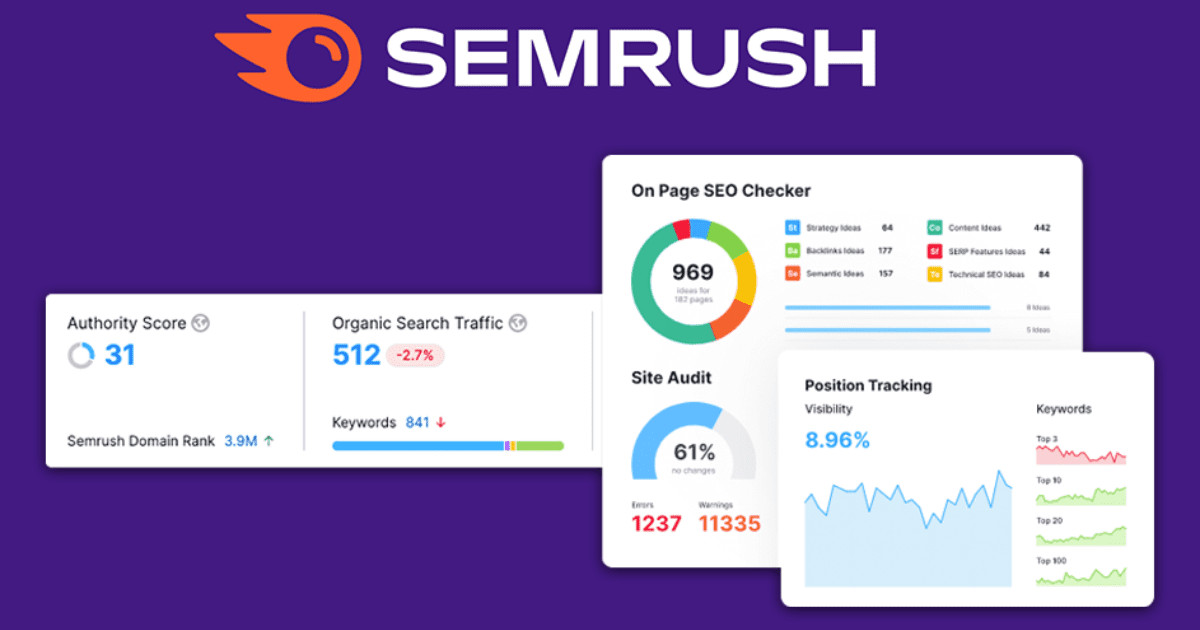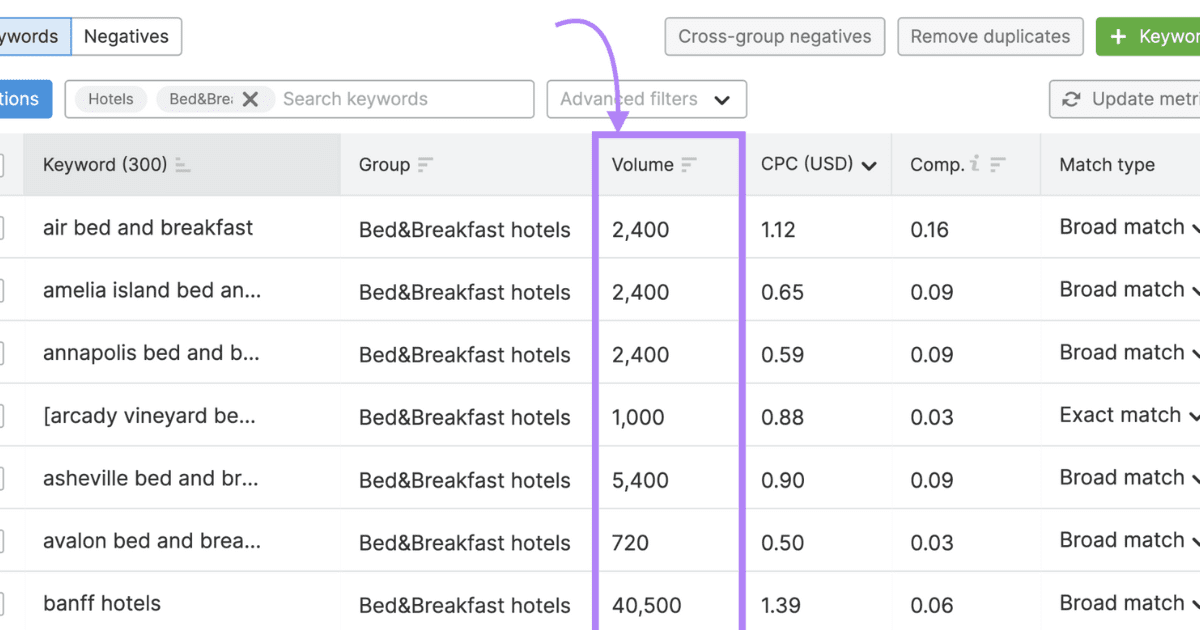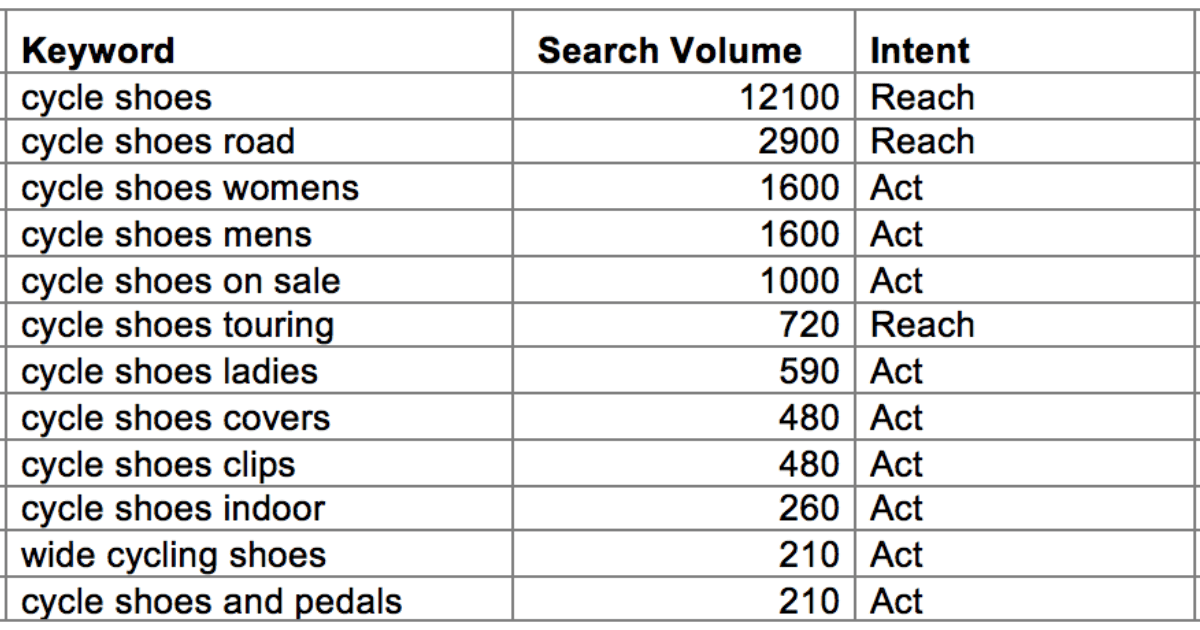In the online world, being in front of customers when they’re ready to buy is priceless. This precise targeting is all about nailing effective keyword research, especially for online stores. Getting the hang of ecommerce keyword research can really boost your online presence, bringing in more visitors and sales to your online shop.
Ecommerce keyword research involves identifying relevant keywords, assessing their potential impact based on search volume and competitiveness, regularly updating your list, and strategically implementing them in content and product pages to drive traffic and sales.
This blog is all about getting into the basics and advanced techniques of ecommerce keyword research, sharing practical tips to help you achieve higher rankings and boost your sales.
Understanding the Importance of Keywords
- The Role of Keywords in SEO: Search Engine Optimization (SEO) is the backbone of digital marketing, and keywords are its lifeblood. Keywords are the terms and phrases that searchers use to find products or services online. By optimizing your ecommerce website with the right keywords, you can improve your site’s ranking on search engine results pages (SERPs), making it more likely for potential customers to find you.
- Keywords and User Search Intent: User search intent refers to the reason behind a search query. Understanding this intent is crucial because it shapes the content and keywords you should use to attract visitors. There are primarily four types of search intents: informational, navigational, transactional, and commercial investigation. E-commerce sites often focus on the latter two, aiming to capture users who are ready to purchase or compare products.
- The Impact of Keywords on Traffic and Conversion: Keywords directly impact both the quantity and quality of traffic to your ecommerce site. According to Wix, long-tail keywords account for 70% of all web searches, highlighting their importance in driving targeted, convertible traffic. A well-researched keyword strategy thus targets high search volume terms and relevant long-tail keywords with lower competition and higher conversion potential.

Identifying Your Ecommerce Niche
Analyzing Market Demand and Trends
You must first understand your market’s demand and the latest trends to select the most effective keywords. Tools like Google Trends and the Google Keyword Planner can provide insights into what your potential customers are searching for, allowing you to tailor your keyword strategy to meet these demands.
Assessing Your Competitors
Competitor analysis is another critical step in e-commerce keyword research. Identifying the keywords your competitors are targeting can reveal gaps in their strategies or highlight high-value keywords. Tools like SEMrush and Ahrefs offer competitor keyword research features that can give you a competitive edge.
Finding Your Unique Value Proposition
Your unique value proposition (UVP) sets you apart from competitors and attracts your ideal customers. It should influence your strategy by incorporating specific keywords that reflect your UVP. For instance, if your ecommerce store specializes in eco-friendly products, terms like “sustainable,” “eco-friendly,” and “green” should feature prominently in your keyword list.
By carefully researching and selecting keywords aligned with SEO best practices, user search intent, and your unique business offerings, you can create a powerful foundation for your ecommerce site’s digital marketing strategy.
This approach ensures that your site attracts qualified traffic, leading to higher conversions and sustained growth in the competitive online marketplace.

Utilizing Seed Keywords and Long-Tail Keywords
What Are Seed Keywords?
Seed keywords are the foundation of a strong ecommerce keyword strategy. They’re concise words defining a product or content topic. For instance, in an organic skincare ecommerce, seed keywords could be “skincare,” “organic lotion,” or “natural face wash.” These seed keywords lead to more detailed long-tail keywords.
The Importance of Long-Tail Keywords
Long-tail keywords, typically three or more words, are vital for directing focused traffic to your ecommerce site. Despite lower search volumes than seed keywords, they yield higher conversion rates due to their specificity.
Users using long-tail often have clear intent, whether informational, navigational, transactional, or commercial research. You engage a more responsive audience by including long-tail keywords in your ecommerce SEO plan. Additionally, such keywords face less competition, aiding in achieving higher search rankings and attracting organic traffic.
How to Generate Long-Tail Keywords from Seed Keywords
Generating long-tail keywords from seed keywords involves grasping your potential customers’ search intent and utilizing keyword research tools to expand your list.
Google Search Console and related search terms at the bottom of search results pages offer valuable insights for finding these keywords. Analyzing monthly search volumes, keyword difficulty, and relevance to your ecommerce business ensures that chosen long-tail keywords match your target audience’s needs and unique value proposition.
Analyzing Competitor Keywords
Tools for Competitor Keyword Analysis
Competitor keyword analysis is crucial in ecommerce research. Tools like SEMrush, Ahrefs, and Moz help identify your competitors’ ranking keywords, search volumes, and relevant pages. This data allows businesses to find keyword strategy gaps and discover overlooked high-potential keywords.
Analyzing Competitor Keyword Strategy
Understanding competitors’ keyword strategy goes beyond knowing their target keywords. It involves analyzing where these keywords appear, like on product, blog, or category pages.
This helps you understand their SEO efforts and the content that resonates with your audience. Watching competitors use keywords in their digital marketing, from search results to social media, can guide your content creation and SEO strategies for better customer targeting.
Learning from Competitor Keyword Gaps
Identifying and using competitor keyword gaps is crucial in the competitive ecommerce scene. These gaps indicate where competitors lack optimized content or miss specific keywords. With a thorough competitor research process, ecommerce businesses can spot these underexploited areas.
Filling these gaps with quality content tailored to the keywords boosts site visibility and authority and drives targeted traffic, increasing conversions. This proactive approach keeps your ecommerce site responsive to market changes, solidifying your role as an industry leader.
Using Keyword Research Tools
Criteria for Choosing Keyword Research Tools
A well-chosen keyword research tool should offer comprehensive insights into keyword difficulty, search volume, and competitive analysis. These metrics are crucial for identifying target keywords that align with search intent and have a realistic chance of achieving higher search engine rankings.
The ideal tool would also provide relevant keyword suggestions, enabling users to explore related keywords and long-tail options that could drive organic traffic to their ecommerce site. The capability to analyze specific keywords and track performance over time also sets apart superior tools, offering ecommerce businesses actionable data to refine their SEO strategy continually.
Integrating Multiple Tools for Comprehensive Research
Relying on a single keyword research tool may provide a skewed perspective on the vast landscape of potential keywords. Therefore, integrating multiple tools can offer a more holistic view, uncovering a wider range of ecommerce keywords and competitor strategies.
Utilizing a combination of favorite keyword research tools, such as SEMrush for competitive analysis, Google Search Console for existing search results insights, and Moz for keyword difficulty and search engine results page (SERP) features, can yield a richer, more diverse keyword list.
This approach ensures that ecommerce businesses are not missing out on low-competition keywords or niche-specific opportunities that could lead to significant gains in organic search results.
Evaluating Tool Data for Keyword Insights
The data provided by keyword research tools must be meticulously evaluated to extract meaningful insights for an effective ecommerce SEO strategy. This involves analyzing average monthly searches to gauge interest levels and identifying high-search volume keywords that might be too competitive.
Conversely, finding keywords with sufficiently high monthly search volumes but lower competition can reveal golden opportunities. It’s also essential to consider the relevance of these keywords to your ecommerce business and whether they match the transactional search intent of potential customers.
By critically assessing this data, e-commerce businesses can prioritize their target keywords and ensure they invest their SEO efforts in areas with the highest ROI potential.
Google Keyword Planner
Google Keyword Planner is a fundamental tool for conducting keyword research for ecommerce. To begin, users need a Google Ads account, which provides access to the Planner’s full capabilities without necessarily running ads.
Once inside the planner, users can search for words or phrases related to their ecommerce business to discover new keyword ideas and insights into the search volume and trends. This initial exploration is vital in building a keyword strategy that resonates with the search engine results pages and the users’ search queries.
Advanced Features of Google Keyword Planner
Beyond its basic functionality, the planner offers advanced features that can significantly enhance keyword research efforts. One such feature is the ability to filter keywords based on various criteria, including location, language, and search network.
This specificity allows ecommerce sites to tailor their SEO keywords to their target audience precisely. Another valuable feature is the historical data analysis, which provides trends and seasonal fluctuations in search volume, offering insights into the best times to target specific keywords.
Moreover, the “Get search volume and forecasts” feature projects performance for a given keyword list, helping to prioritize efforts and allocate resources effectively.
Maximizing Keyword Potential with Google Keyword Planner
To maximize the benefits of Google Keyword Planner in conducting ecommerce keyword research, users should explore its full potential extensively. This includes using the tool to identify keyword gaps by comparing your keyword list against competitors’ strategies.
By analyzing what keywords competitors are ranking for, ecommerce businesses can uncover untapped opportunities and refine their keyword list to include relevant search terms with adequate search volumes and manageable competition levels.

Alternative Keyword Research Tools
SEMrush
SEMrush stands out for its comprehensive digital marketing suite, offering invaluable insights into ecommerce keyword research. This tool excels at conducting competitor research, allowing ecommerce businesses to uncover the keywords driving traffic to their competitors’ sites.
The ability to perform an in-depth analysis of competitor keywords and search engine rankings offers a strategic advantage. With SEMrush, users can identify gaps in their own SEO strategy and discover high-potential keywords that could lead to higher search engine rankings for their online store.
Ahrefs
Ahrefs is renowned for its robust database and precise keyword difficulty scores, making it a favorite keyword research tool among digital marketers. It provides detailed information on average monthly searches, search volume, and SERP overview for specific keywords.
This tool is particularly effective for identifying low-competition keywords and understanding their search intent. Ahrefs also offers unique insights into the organic traffic potential of target keywords, empowering ecommerce websites to craft a more targeted and effective SEO strategy.
Ubersuggest
Ubersuggest, created by Neil Patel, is a user-friendly tool that excels in generating long-tail keyword ideas. It’s particularly beneficial for e-commerce businesses looking to expand their keyword list with relevant search terms that are less competitive.
Ubersuggest provides data on search volume, SEO difficulty, and paid difficulty, along with trend graphs for each keyword, giving a clear view of its potential impact. This tool is an excellent starting point for businesses new to keyword research, offering straightforward insights to inform their digital marketing efforts.
Long-Tail Keywords and Product Specificity
Long-tail keywords are more specific phrases and usually longer than more commonly searched-for keywords. They often contain three or more words.
These keywords are significant for ecommerce businesses as they tend to have a lower search volume but higher conversion rates due to their specificity. Identifying long-tail keywords involves understanding your product offerings deeply and how potential customers might search for them online.
The Connection Between Long-Tail Keywords and Product Specificity
The specificity of long-tail keywords makes them highly relevant to an ecommerce site’s product and category pages. When users search using these specific phrases, they are usually further along in the buying process and have a clear intent.
By matching these search queries with detailed product-specific content, ecommerce websites can attract more qualified traffic, leading to higher conversion rates.
Strategies for Optimizing for Long-Tail Keywords
To optimize for long-tail, integrate them naturally into product descriptions, blog posts, and meta tags. Creating detailed content that addresses specific queries related to your ecommerce keywords can also attract organic traffic.
Additionally, focusing on the user experience and ensuring that your site is easily navigable can help search engines understand the relevance of your pages to specific search terms. Regularly updating your keyword strategy to include emerging long-tail keywords can keep your ecommerce website competitive in search engine results.

Balancing Search Volume and Competition
- Understanding Search Volume Metrics: Search volume indicates the number of times a specific keyword is searched for within a given timeframe. High search volume keywords can drive significant traffic to an ecommerce site but often come with high competition. Understanding these nuances of search volume metrics allows businesses to identify keywords that offer the best opportunity for visibility in search engines.
- Assessing Keyword Competition Levels: Keyword competition levels reveal how difficult it would be to rank for a particular keyword. Established sites with strong SEO strategies often dominate high-competition keywords. Tools like Ahrefs provide valuable data on keyword difficulty, enabling ecommerce businesses to evaluate whether targeting a high-competition keyword is feasible.
- Techniques for Finding the Balance: Finding the right balance between search volume and competition requires a strategic approach. Start by targeting long-tail keywords and those with moderate search volumes relevant to your ecommerce business. Utilizing keyword research tools to analyze the competitiveness of these keywords can help you prioritize which ones to focus on. Additionally, continuously monitoring and adapting your keyword strategy based on search trends and performance data can lead to sustained success in search engine rankings.
Localizing Keywords for Ecommerce
In ecommerce, understanding the power of location-based keywords is crucial. These keywords, which include specific geographical locations, help businesses target potential customers within a particular area.
This strategy is especially beneficial for online stores with physical locations or offering region-specific products. By incorporating these keywords, businesses can significantly improve their visibility to local consumers, making it an essential part of the keyword research process.
Techniques for Local Keyword Research
Local keyword research involves identifying keywords that potential customers in your target location use in search queries. Tools like Google’s Keyword Planner allow you to filter keyword data by geographical area, providing insights into local search trends.
Additionally, analyzing the search bar suggestions when typing relevant keywords can reveal location-based variations. This approach helps uncover valuable local keywords that might not be immediately apparent.
Incorporating Local Keywords into Your Strategy
Once identified, integrating these local keywords into your ecommerce strategy requires careful planning. Place them naturally within product descriptions, blog pages, and meta tags. Ensure that your content addresses the needs and interests of the local audience.
Also, consider creating location-specific pages on your website to target these keywords further. This targeted approach can improve search engine rankings and increase traffic from local searches.
Seasonal and Trend-Based Keyword Research
Identifying Seasonal Trends in Your Niche: Seasonal trends significantly influence consumer behavior. Tools like Google Trends can help identify these patterns by showing the yearly fluctuation in search volume for specific keywords. By analyzing this data, businesses can pinpoint the months when interest in certain products peaks, guiding their keyword strategy.
Leveraging Trending Keywords for Short-Term Gains: Trending keywords, while temporary, offer opportunities for quick wins. Ecommerce sites can capitalize on these by creating timely content or promotions that align with current interests. This strategy requires staying updated with industry news and social media trends to react promptly.
Adapting Your Strategy to Seasonal Changes: Adjusting your ecommerce strategy to accommodate seasonal changes ensures your business remains relevant throughout the year. It involves updating your keyword list with seasonal terms and optimizing existing content to reflect current trends.
Incorporating User Intent in Keyword Strategy: Understanding the intent behind seasonal searches is crucial. Whether users are looking for information or ready to purchase, tailoring your content to match their intent can enhance engagement and conversions.
Classifying User Intent for Ecommerce
Classifying user intent involves categorizing keywords based on what the user is trying to achieve. For ecommerce, this typically falls into three categories: informational, navigational, and transactional.
Aligning your content with the correct intent ensures that your site meets the users’ needs at various stages of their buying journey. This alignment begins with conducting keyword research to find related keywords and understand the main keyword intent.
Several tools can help analyze user intent behind search queries. SEMrush and Ahrefs offer features that assess the intent by analyzing the types of pages that rank for specific keywords.
Google’s “People also ask” feature and the search bar suggestions provide insights into users’ questions and concerns, indicating their intent. Leveraging these tools enables ecommerce sites to craft content that resonates with their audience’s specific needs.

Creating a Comprehensive Keyword List
Organizing Keywords by Category
A methodical approach is essential in the keyword research process, where organizing keywords by category plays a pivotal role. This categorization involves grouping keywords based on their relevance to different aspects of your business, such as product categories, customer intent (informational, navigational, transactional), and geographical location.
Tools like keyword data from Google’s Keyword Planner can aid in this segmentation, ensuring that each target keyword aligns with specific content or product pages. Effective organization allows for a more targeted strategy, enhancing the likelihood of reaching your intended audience.
Prioritizing Keywords for Targeting
Not all keywords hold the same value for your ecommerce business. Prioritization involves assessing each keyword’s potential impact based on metrics such as monthly search volume and the keyword’s relevance to your products or services.
Conducting competitor research can also reveal gaps in the market that you can exploit. Keywords with the highest search volume may not always be the best targets due to high competition. Instead, focus on relevant keywords where you have a realistic chance of ranking well.
Maintaining and Updating Your Keyword List
The digital landscape is dynamic, with consumer behavior and search trends constantly evolving. Regularly updating your keyword list is thus crucial to maintaining relevance and competitiveness.
This maintenance should include removing underperforming keywords, adding emerging terms identified through ongoing keyword research, and revising your strategy based on the latest keyword data. A proactive approach ensures your ecommerce site remains aligned with current search behaviors and market demands.
Implementing Keywords in Product Pages and Content
Best Practices for Keyword Placement
Strategic keyword placement is fundamental to maximizing SEO potential. Key locations for target keywords include title tags, meta descriptions, product descriptions, and headers. However, avoiding keyword stuffing is vital, which can negatively impact readability and search rankings.
Instead, aim for natural integration of keywords, ensuring content remains engaging and informative. Additionally, variations of the main and relevant keywords throughout the text can help capture a broader range of search queries.
Creating Content that Ranks for Your Keywords
Developing content that resonates with your audience while incorporating target keywords is a balancing act. Blog pages are an excellent platform for addressing informational keywords and providing value to your audience beyond just selling products.
This content should solve problems or answer questions related to your niche, positioning your brand as an authoritative source. Leveraging the keyword research process to find related keywords can also inspire potential keyword ideas for new content, expanding your reach.
Auditing Your Site for Keyword Optimization
Regular audits are essential to assess how well your site utilizes keywords across product pages and content. This examination should examine keyword density, placement, and relevance, ensuring alignment with current SEO best practices.
Some tools offer comprehensive audits highlighting improvement areas, including suggestions for better keyword utilization. Adjustments based on audit findings can significantly enhance your site’s visibility and performance in search engine results, driving more targeted traffic to your ecommerce site.

Tracking and Analyzing Keyword Performance
Setting Up Tracking for Keyword Performance
Setting up tracking mechanisms is essential to harnessing the power of your keyword research efforts. A comprehensive keyword tool allows you to monitor the performance of each target keyword, including metrics such as monthly search volume and ranking positions.
This setup allows ecommerce businesses to measure the direct impact of their SEO strategies on organic search visibility. Integrating these tools with your website’s analytics platform provides a holistic view of how keywords contribute to traffic and conversions, enabling data-driven decisions.
Analyzing Keyword Trends Over Time
The digital market is fluid, and keyword trends reflect changing consumer behaviors and interests. Businesses can identify emerging patterns and shifts in user search behavior by thoroughly analyzing keyword data over time. This insight is invaluable for staying ahead in a competitive landscape.
The keyword research process, including competitor research, should be iterative, allowing for the adaptation of strategies to align with these trends. Analyzing the same keywords’ performance across different periods highlights opportunities for refining your approach to more effectively target relevant keywords.
Adjusting Your Strategy Based on Performance Data
Data gleaned from tracking and analyzing keyword performance is the foundation for strategic adjustments. If certain keywords with the highest search volume do not yield the expected results, it may indicate a need for keyword placement or content relevance optimization.
Conversely, finding related keywords that show promising growth can inspire potential keyword ideas for expanding your content strategy. This continuous loop of performance review and strategy adjustment ensures that your ecommerce site remains aligned with current search dynamics, optimizing visibility and engagement.
Conclusion: Mastering Keyword Research for Ecommerce Success
Mastering ecommerce keyword research is a dynamic and ongoing process that demands attention to detail, analytical prowess, and adaptability. By meticulously organizing and prioritizing keywords, implementing them strategically across product pages and content, and rigorously tracking their performance, ecommerce businesses can significantly enhance their online presence.
The insights gained from analyzing keyword trends and adjusting strategies are invaluable for staying relevant in a rapidly evolving digital marketplace. With a commitment to understanding and applying these principles, ecommerce entities can achieve sustained success and growth in their online ventures.







